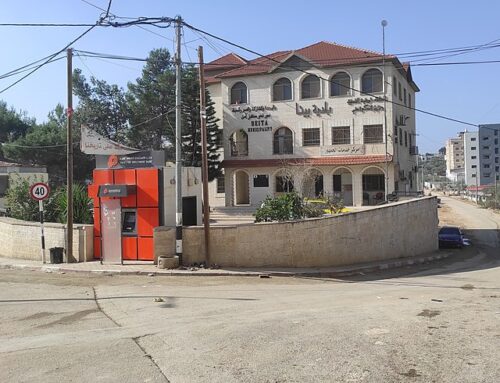This is a further pithy electoral analysis from Thomas G. Mitchell, Ph.D. In postscripts, there’s a short exchange of views with Ralph Seliger. Dr. Mitchell’s title is “From 2006 to 2014: What a difference eight years make”:
The Israeli press is full of articles reporting on the maneuvers of various parties as campaigning for new elections begins. This time around the parties face a new, higher entry barrier than at any time in the past—3.25 percent or four seats to get into the Knesset. This means that parties that are presently polling at less than four percent are in real trouble, with those polling at approximately four percent teetering on the edge.
If voters think that a party will not have the sufficient votes to make it over the barrier, they are unlikely to risk their vote by voting for it. This, as in selling on the stock market, can lead to a herd mentality. Tzipi Livni’s Hatenua is presently polling right around four seats. So it makes sense for her to merge with a larger party.
There are two logical suitors: Yair Lapid’s Yesh Atid party, which represents liberal social policies and free-market economics, and the Labor Party, which has views on the Israeli-Palestinian conflict that are very similar to Livni’s. Isaac Hertzog, the fairly new leader of the Labor Party, is also negotiating with Livni’s former rival for the leadership of the Kadima Party, Shaul Mofaz.
Since today’s Kadima has only two seats, it’s fated to disappear unless it can merge successfully. So we are likely to see a situation in which the junior partner of the 2006-09 ruling coalition, Labor, absorbs the remnants of its senior partner, Kadima. Based on present polling and the tendency of polls to initially overestimate the fortunes of new centrist parties or mergers, I would guess that a merger will result in no more than 25 seats for the combined list and probably more like 20. When one remembers that in 2006 Kadima by itself won 29 seats and Labor won an additional 19, we are looking at a very different result for the center-left this time around. With Yesh Atid likely to win about two-thirds to a half of its present 19 mandates or between 10 and 13, and Meretz likely to win about six or seven, there is not enough on the left to rally a coalition around. We are talking about a total of about 40-45 seats without the religious parties.
Why the difference? The short answer is that new centrist parties have a lifespan of about one or two Knesset terms. This was the case with Rafi (1965-68), the Democratic Movement for Change (1977-79), Shinui (1999-2006), and Kadima (2006-2013). Why? Because the electorate that votes for the center is a fickle lot that does not know exactly what it wants, but knows what it does not want.
Most new centrist parties are a collection of ambitious and opportunistic politicians and outsiders who lack a common ideology. Unless they obtain power in a big way, they usually succumb to fighting and finger pointing. Tommy Lapid’s Shinui lasted a bit longer than the norm because it was slower to take off. Kadima lasted longer because it began unusually as the governing power created by Sharon in his last months as prime minister before his stroke, making it one of the largest parties from its beginning. The second time around, Kadima cannibalized Labor and Meretz.
While the addition of the Kadima remnants is likely to stop the decline of Labor and start it back on the road to recovery, it will hardly form the basis of a government. But Labor right now needs new generals like former Chief of Staff and Defense Minister Shaul Mofaz. And it also needs talented former ministers like Tzipi Livni. Maybe rebuilding Labor is enough for now.
Comment from Ralph Seliger: You’ve missed any mention of this election’s centrist version: a new list under Moshe Kahlon, which is polling around 11-12. If Kahlon possibly joins the dovish bloc, and Shas embraces its dovish side as well, we can see something interesting. Even Lieberman is seen as possibly wanting to maneuver in a more moderate direction (e.g., Chami Shalev’s Ha’aretz column, “Avigdor Lieberman and the new far-right Israeli center“). And this is not even counting the Arab parties, which will survive in one or two merged lists. What we’ve got is a free for all.
Thomas Mitchell’s response: Ralph,
Even assuming the optimum situation in which Kahlon gets all the seats that he is polling now, and then decides to go with Labor rather than with his more natural coalition partners on the Right, what will happen if peace negotiations get going? Kahlon’s party will behave as did Barak’s coalition partners in July 2000 and abandon him as soon as concessions appear evident. But what I think is more likely is that although Labor may win more seats than the Likud, the president–who is from the Likud–will give the nod to whoever leads the Likud because it will have a better chance of forming a majority coalition. This is what happened in 2009, which is why Livni is only a former cabinet minister and not a former prime minister.






Leave A Comment